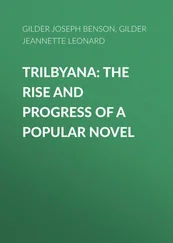Wilhelm Joseph von Wasielewski - The Violoncello and Its History
Здесь есть возможность читать онлайн «Wilhelm Joseph von Wasielewski - The Violoncello and Its History» — ознакомительный отрывок электронной книги совершенно бесплатно, а после прочтения отрывка купить полную версию. В некоторых случаях можно слушать аудио, скачать через торрент в формате fb2 и присутствует краткое содержание. Жанр: foreign_antique, foreign_home, music_dancing, на английском языке. Описание произведения, (предисловие) а так же отзывы посетителей доступны на портале библиотеки ЛибКат.
- Название:The Violoncello and Its History
- Автор:
- Жанр:
- Год:неизвестен
- ISBN:нет данных
- Рейтинг книги:3 / 5. Голосов: 1
-
Избранное:Добавить в избранное
- Отзывы:
-
Ваша оценка:
- 60
- 1
- 2
- 3
- 4
- 5
The Violoncello and Its History: краткое содержание, описание и аннотация
Предлагаем к чтению аннотацию, описание, краткое содержание или предисловие (зависит от того, что написал сам автор книги «The Violoncello and Its History»). Если вы не нашли необходимую информацию о книге — напишите в комментариях, мы постараемся отыскать её.
The Violoncello and Its History — читать онлайн ознакомительный отрывок
Ниже представлен текст книги, разбитый по страницам. Система сохранения места последней прочитанной страницы, позволяет с удобством читать онлайн бесплатно книгу «The Violoncello and Its History», без необходимости каждый раз заново искать на чём Вы остановились. Поставьте закладку, и сможете в любой момент перейти на страницу, на которой закончили чтение.
Интервал:
Закладка:
It is remarkable that, amongst Abel’s numberless published works, which consist partly of concertos and orchestral pieces and partly of chamber music, there are no compositions for the gamba. This must be explained by the fact that the zenith of gamba-playing had been reached, and the art was on its decline, at the beginning of the second half of the eighteenth century. It went out of fashion, and with it also gamba music, and in its place only violoncello compositions were in request. In many ways this change was as much lamented as was the case at the banishment of the lute to cabinets of curiosities or the lumber room.
After Abel there were no German gambists of conspicuous importance to mention. From the middle of the last century the gamba was more and more neglected, in consequence of the violoncello being brought forward, and the younger geniuses devoted themselves by preference to this instrument, which approached more nearly to the violin, then at the summit of all instrumental music.
Amongst stringed instruments, which had shared the same fate as the gamba, belong the Viola bastarda and the Viola di Bordone (English, Barytone). The first instrument was in shape somewhat thicker than the gamba and was provided with six or seven strings. 38 38 According to Pohl, the number of these metal strings was raised to twenty-seven. (S. C. F. Pohl: “Haydn,” I., 250.) Information regarding the barytone and barytone compositions are to be found there.
In order to increase the resonance, as many steel strings were introduced under the fingerboard and bridge, which were tuned to the same pitch as those above, like the Viola d’amore. Another variety of the gamba was the barytone, which was cultivated in the last century.
In Leopold Mozart’s violin tutor is found the following description of it: “This instrument has from six to seven strings like the gamba. The neck is very broad and the back part hollow and open, down which nine or ten brass or steel strings are run beneath, which are touched and pinched by the thumb; so that, at the same time as the principal part is played with the bow on the upper cat-gut strings, the thumb by striking the strings stretched under the neck of the instrument can play the bass; and therefore the music must be arranged specially for it. Moreover, it is a most agreeable instrument.” From this description it is evident that the barytone was a bass instrument resembling the Viola d’amore. The barytone in its time was much liked in Austria. Several Austrian composers, as Cybler, Weigl, and Pichl, and at their head Joseph Haydn, composed for this instrument. The latter was incited to it by his benefactor, the Prince Esterhazy, who looked with particular favour on the barytone. Haydn wrote no less than 175 pieces for it. 39 39 Pohl: “Haydn,” I., 257.
The tuning of the strings on the fingerboard of the barytone was on the same principle as that of the gamba.
The Viennese, Anton Lidl, who was born about 1740, was much esteemed as a most distinguished barytone virtuoso. Gerber says of him, “that he rendered still more perfect his instrument, which had been invented about the year 1700. It is in shape like the Viola da gamba, except that it has brass strings at the back, which are played at the same time with the thumb. These lower strings he increased to twenty-seven and the semitones were played with them.” He must have been an extraordinary artist on this instrument. The author of the Almanack of 1782 says: “His performance united the most charming sweetness to German vigour, the most surprising syncopations with the most harmonious melody.” According to Burney, Lidl was no longer living in 1789. Up to 1783 he had published, in Amsterdam and Paris, Duets, Quartets, and Quintets—altogether seven works. His compositions for the gamba were not published.
The barytone disappeared with the gamba, in the course of the second half of the last century, from musical practice.
The same change took place in Italy about the same time or somewhat earlier, when a lively interest in the violoncello was aroused there by Franciscello, of whom we shall speak farther on. It appears, indeed, that in the land of the arts, as the quotations already given from Maugars’ papers inform us, no predilection had prevailed for the higher study of the gamba, either for the reason that among stringed instruments the cultivation of the violin—which from the seventeenth century had decidedly usurped the first place in the study of music—was chiefly pursued, or that the Italian composers did not specially concern themselves with the gamba. As a matter of fact, so far as can be perceived, with the exception of Tartini, no noteworthy Italian composer considered it worth his while to bring it into the field of creative activity. Besides Ferabosco, of whom mention has already been made, there are amongst famous Italian bass violin players and gambists to be named: Allessandro Romano with the cognomen “della Viola,” and Teobaldi Gatti. Romano was born about 1530 at Rome, and in 1560 was a singer in the Papal (Sixtine) Chapel. He later became a monk of the monastery of Mount Olivet, under the name of Giulio Cesare. But he did not find his sojourn there agreeable, for he was at strife and contention with one or other of the monks of his order through incompatibility of temper. His compositions, published between the years 1572-1579, consist of “Canzone alla Napolitana” for five voices and a book of Motets in five parts.
Teobaldi Gatti, born at Florence about 1650, not only distinguished himself as a gamba player, but also made himself known in his time as an operatic composer. In the latter respect he was influenced by Lully, whose first opera-overtures so impressed him that he resolved to go to Paris in order to do homage to his illustrious countryman. Lully, who was flattered, showed his gratitude for this attention by making Gatti a member of the Parisian Opera orchestra, which post he filled for nearly fifty years uninterruptedly. 40 40 Gerber mentions him as a violoncellist, which must be a mistake, since in the Parisian Opera orchestra, up to 1727, as far as is known, only gambists were employed. He may, however, have played both instruments.
He died in 1727, in Paris. There were published in 1696 twelve “Airs Italiens” by him, two of which are duets.
As skilful Italian gambists are conspicuous also Marco Fraticelli and Carlo Ambrosio Lunati, 41 41 See “The History of the Violin,” by W. Sandys and Simon Andrew Forster. London, 1864.
of Milan, with the cognomen “Il gobbo della Regina.” The latter came to England during the reign of James II. Nothing further is known concerning either of these instrumentalists. It is worthy of remark in this place that the famous Italian singer, Lenora Baroni, born about 1610, was, according to Maugars’ testimony, a clever theorbo and gamba player. As such she was in the habit of accompanying herself in singing.
It has already been pointed out that the viola da gamba, which for nearly three hundred years (for the “Basso di viola,” or Gerle’s “great violin,” was, in fact, a gamba, although as yet of a somewhat primitive form) had played an important part both as an orchestral and solo instrument, was replaced by the violoncello in the course of the eighteenth century. Subsequently when the violin as a leading instrument in melody usurped the place of the cornet (Zinken), and the discant viola (French par dessus de viole), it became necessary to provide an equivalent for the bass part of string quartets, as the tone of the gamba in ensemble playing proved too weak and thin in proportion to the violin.
Mattheson says of it, in his “Neu eröffneten Orchestre,” which appeared in 1713: “The plaintive Viola da gamba (Fr., Basse de Viole, properly so called) is a beautiful delicate instrument, and he who wishes to signalise himself on it must not keep his hands long in his pockets.... Its chief use in concerts is only for the strengthening of the basses, and some indeed pretend to execute a ‘Thorough Bass’ on it, of which, up to now, I have never seen a good attempt.”
Читать дальшеИнтервал:
Закладка:
Похожие книги на «The Violoncello and Its History»
Представляем Вашему вниманию похожие книги на «The Violoncello and Its History» списком для выбора. Мы отобрали схожую по названию и смыслу литературу в надежде предоставить читателям больше вариантов отыскать новые, интересные, ещё непрочитанные произведения.
Обсуждение, отзывы о книге «The Violoncello and Its History» и просто собственные мнения читателей. Оставьте ваши комментарии, напишите, что Вы думаете о произведении, его смысле или главных героях. Укажите что конкретно понравилось, а что нет, и почему Вы так считаете.












![Edward Ellis - Adrift on the Pacific - A Boys [sic] Story of the Sea and its Perils](/books/753342/edward-ellis-adrift-on-the-pacific-a-boys-sic-s-thumb.webp)